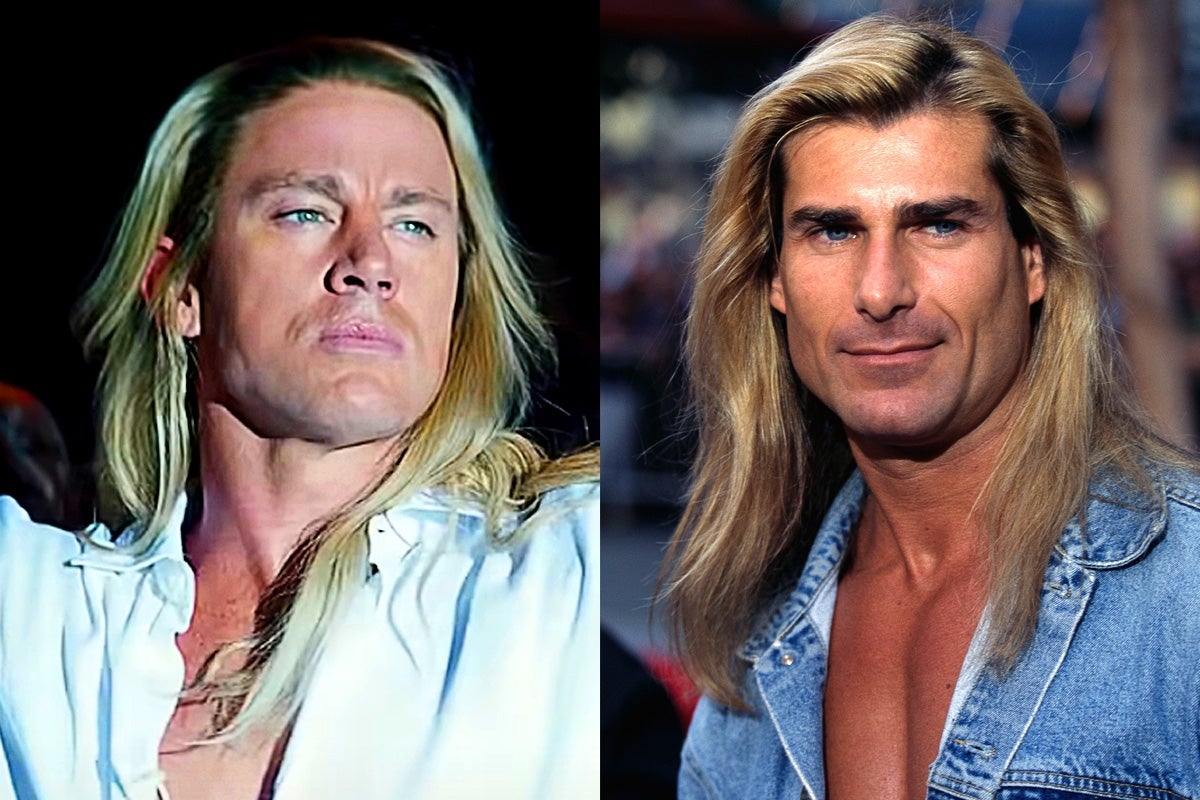The Lost City stars Sandra Bullock as a disillusioned romance novelist, Loretta Sage, who writes what she considers “schlock” because her unsophisticated audience won’t read about history unless it’s squeezed in between sultry love scenes. All Loretta’s readers seem to care about is Dash, the hunky main character in all of Loretta’s books, played by equally hunky model Alan Caprison (played by equally hunky actor Channing Tatum). As Dash, Alan wears a long, blond wig and poses with a swooning heroine for photo shoots to grace the covers of Loretta’s work. When, during a book event, Dash’s fans interrupt Loretta’s attempt to explain the background of her latest novel in order to demand that Alan rip off his shirt, she becomes so fed up that she decides to kill Dash off once and for all.
As Loretta soon learns, getting rid of an iconic, long-haired romance cover model is not as easy as it sounds. Modern romance writers know this all too well: The genre has had a difficult time shaking off the enduring image of Fabio Lanzoni, the not-so-subtle real-life inspiration for Dash’s character. (The movie’s villain, who kidnaps Loretta in a Romancing the Stone-esque plotline, even sarcastically refers to Dash as “Fabio” at one point.) Fabio Lanzoni was a prolific romance novel cover model in the ’80s and ’90s, posing for hundreds of clinch covers, often with his hair blowing in the wind, a damsel in his arms, his shirt buttons powerless to contain his mighty pecs. Though the Milan native is now 63 and retired, his name remains synonymous with the genre. And romance novelists hate it.
Fabio is the He Who Must Not Be Named of the romance fandom, earning eyerolls whenever he’s mentioned in a story about the genre. Isabelle Popp, in her delightful Fabio-by-the-numbers piece for BookRiot last year, proposed a “words to Fabio” standard for mainstream romance coverage that boils down to: the sooner he’s mentioned, the less effort or expertise went into the story. (Words to Fabio in this story: Either five or 176, depending on whether you count the headline.) Two of Slate’s pieces about romance, both of which I edited, receive not-so-flattering shoutouts for their Fabio mentions (at least our profile of romance writer Alyssa Cole spent 2,000 words before invoking the name of the dread spokesman for I Can’t Believe It’s Not Butter). As a journalist who also happens to be a romance fan, I admit, it’s a tough balance to strike! Fabio is a reference point even non-romance readers can understand and appreciate, and often, that’s a major chunk of our audience—plus, both of the references to Fabio in the pieces Popp mentions are talking about romance stereotypes, a subject in which he would seem to be more than fair game.
What is it that has made the image of Fabio endure for so long, to the consternation of fans of the very genre he has come to represent? Those frustrations have some merit, after all: He’s a relic from a bygone era; a straight, white, conventionally attractive man representing a genre that is often referred to as “by women and for women” and where authors from marginalized groups have long fought to have their work included and recognized in the face of romance’s homogenous public image. No one symbol could possibly hope to encapsulate all of romance, with its many sub-genres and styles. In Dangerous Books for Girls: The Bad Reputation of Romance Novels Explained, Maya Rodale—herself a romance novelist, and one of my favorites—has a theory that “it’s what we don’t talk about when we talk about Fabio” that’s the problem, pointing out that it’s easier to make jokes about this one hottie than to engage with the complex ideas romance novels address: “class, love, women’s sexuality and pleasure, rape, virginity, money, feminism, masculinity, and equality.” That is true! It is certainly easier (and a whole lot of fun) to crack jokes about this dude’s pecs.
[Read: The Writer Who Helped Spark an Explosive Debate Over the Future of Romance Novels.]
But does that mean we shouldn’t? The Fabio conundrum speaks to a tension that has come to define romance’s modern identity: It’s a billion-dollar industry that demands to be taken seriously and is about so much more than hunky, shirtless men sweeping ladies off their feet—but a lot of the time, it’s also about hunky, shirtless men sweeping ladies off their feet. What does it mean to take romance seriously? The Lost City arrives at its own answer when Alan chastises Loretta for calling her work “schlock” when it has brought joy to so many people. He says he used to be embarrassed to be a cover model—to be Fabio—until he saw how thrilled a fan was to pose with him. It’s an appreciation of romance that has nothing to do with the loftier issues the genre wrestles with, but it’s also an appreciation that finds power and freedom in romance’s silly side. After Fabio gave us all those passionate embraces, it seems only fair that we embrace him right back.
